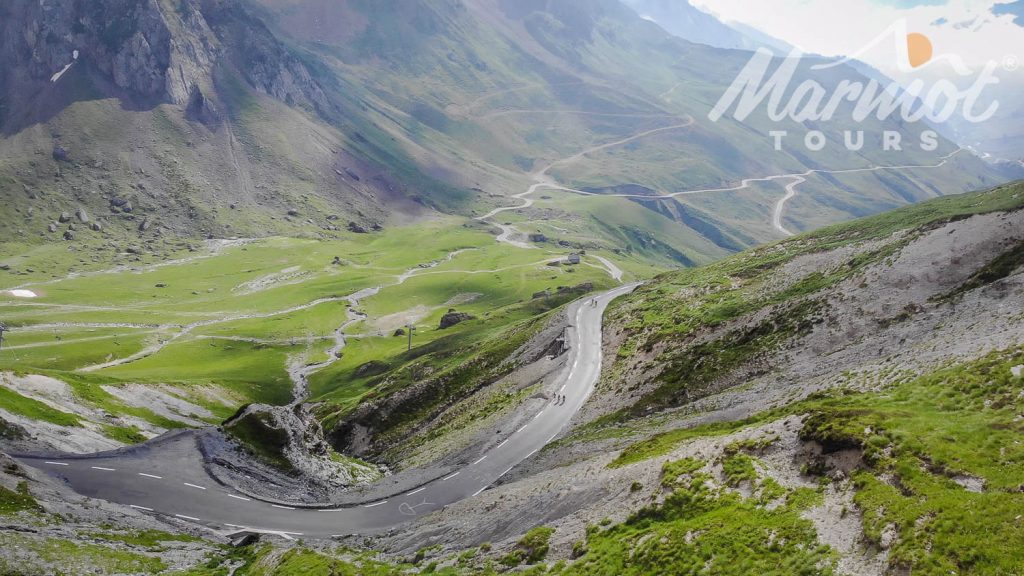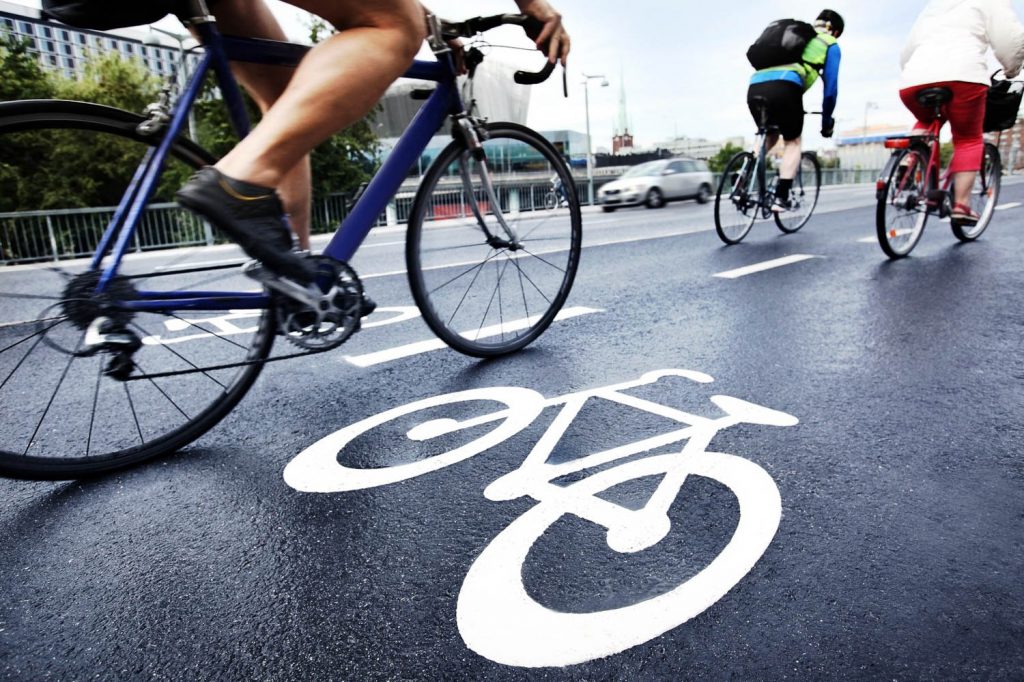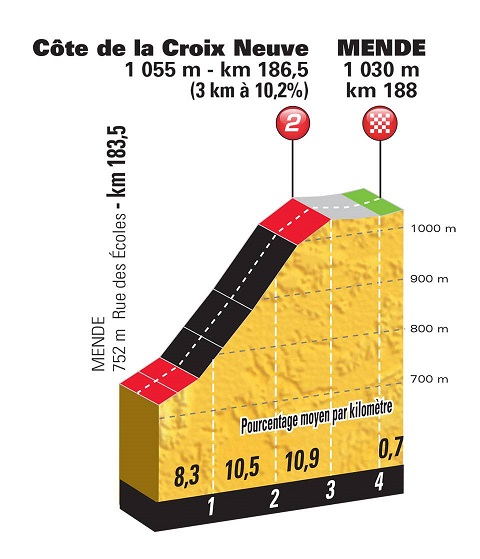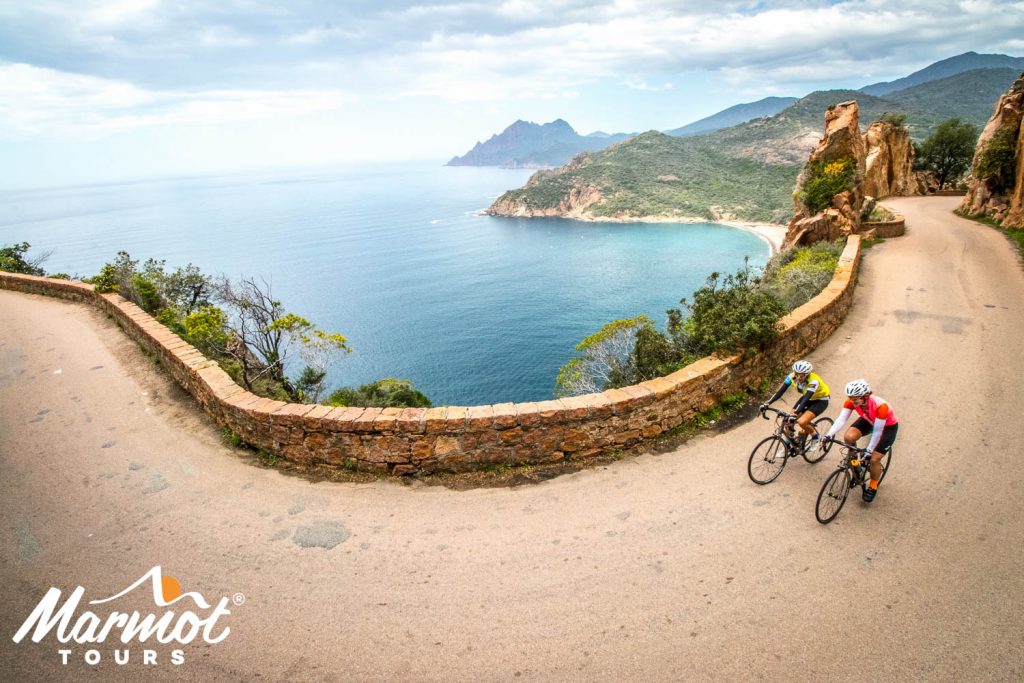Training for a cycling holiday in the mountains…sounds daunting, right?
Well it needn’t be, and it can be as easy as riding to work and back! Read on for our tips on how to turn the humble bike commute into a flexible, personal and tailored training plan, adaptable to any circumstance (or upcoming road cycling holiday!)
So you’ve booked your next european cycling trip and thoughts immediately turn to training (well, eventually, after a few carefree moments imagining yourself floating up Alpine passes on a glorious sunny afternoon!). For those juggling busy family and work lives there is often little time during the week for cycling, let alone training.

Many of us, however, are quite prepared to sit on public transport for an hour each way, or sit in the same traffic jam Monday to Friday. But by ditching the car in favour of the bike you could use this time to ride, and save yourself a small fortune in fuel and parking too.
Q: What are your cycling targets?
A: It’s obvious enough that cycling over driving is going to go a long way to getting you in shape for your trip, however long or short, flat or hilly your commute may be. What we’re interested in is optimising your time on the bike to bring about the best possible results, and this requires some sort of target to work towards.
We’re going to assume that your goal is to get better at cycling up mountains (perhaps you’ve booked onto one of our trips), so our intention is to recreate these conditions where possible, making best use of what we have around us. More on that in just a moment… We’ll also assume that you don’t live at the foot of a mountain and/or have easy access to long hills. If you do, lucky you!
Q: Which way should I go?
A: It might be that you live too far from work that cycling all of the way just isn’t an option for you. Perhaps consider driving part way there with the bike in the car, or even getting the train part the way and cycling the rest? Each situation will be different but there are usually ways of making it work if you’re prepared to put the effort in. Whichever your approach, knowledge of the routes and time it takes to ride them is key.
The first thing to consider is what options you have. What is the flattest route, and what is the hilliest? Which route is fastest and which one is quietest? Knowing your options is key when it comes to planning as it will allow you to tailor your ’training’ to suit.

Embrace the flat
Not living at the base of a mountain means we must embrace what we DO have and use it to our advantage. One of the most useful attributes a rider can have when riding the mountains is consistency, as maintaining a consistent effort up a hill will allow the rider to avoid going ‘into the red’ and therefore be more efficient, and this is what we want to recreate.
Alpe d’Huez, for example, which features on our ‘Classic Cols of the Alps‘ cycling holiday has an average gradient of 8.1% over its 13km length, and remains a smooth gradient most of the way up. You will find it much easier to ration your energy on a climb like this if you have put the training in beforehand, on the flat in the UK.
Q: How hard should I be trying?
A: Many people nowadays are choosing to use power meters to measure their output as they show you in numbers exactly how hard you are working, allowing the rider to hold a constant wattage to best recreate the feeling of riding up a mountain. If a rider is able to hold 200watts for one hour on the flat for instance, it is expected that the rider will be able to hold the same power on a climb. What we are attempting to recreate in training is the feeling of riding up a steady gradient, so work out which route best suits this approach and set out with the intention of remaining consistent – 20 minute intervals at a slightly slower cadence will help build strength by recreating a similar sort of exertion to climbing or ‘grinding’ up steep hills.

Slower cadence strength work is invaluable for preparing for steeper hills. Climbs like the Angliru in Spain, as featured on our Classic Cols of the Picos & Angliru Spanish cycling holiday, or the Mortirolo in Italy, as featured on our Classic Cols of the Dolomites & Stelvio Italian cycling trip both have pitches that flirt with 20%.
The key with this training method is to hold a steady power, and be consistent!
20 minutes of course isn’t going to see you to the top of The Alp. Even Armstrong couldn’t do it in 20, his best was 40 something… What the 20 minute efforts do is condition your body to tolerate repeat exertion, and being long at 20 minutes forces you to focus on gradual and consistent release of power, as you will need it in the mountains.
20 minutes on the Raid Massif Central would see you to the top of côte de la Croix Neuve and 20 minutes on the Raid Dolomites would see you to the top of Passo Eira…

If you’re lucky enough to have some longer climbs nearby and you can incorporate them into your route then by all means do so. A combination of slow-cadence strength efforts and higher-cadence spin efforts will prepare you for sustained climbs, and if ridden back to back will bring about these results even quicker.
Q: But what if it’s windy?
A: It may not feel like it at the time but a strong headwind can be used to our advantage. Choose the flatter route and set out into the wind. Riding into wind like this will not only prepare you for the physical toil of a sustained climb – the slower cadence, the increased resistance etc, but it will help hone a resilient mindset, which will be invaluable when the road pitches up and you’re already tired. Try to lessen your frontal area by hunkering down over the bars, keep your elbows in and keep your upper body still, moving only your legs.
Q: And what if I’m tired?
A: The body cannot recover, repair and improve if it’s not allowed to rest, and any effective training plan must include an element of rest. The chances are that a steady ride to and from work five time per week alone will be enough to get you into good shape, even without the 20 minute intervals and hill repeats, so factor this in and revert to one of the flatter and more-direct route options a couple of times per week. It’s important to listen to your body and be prepared to scale things back if you’re struggling to stay awake at your desk, for instance!
We’ve been talking about the benefits of spinning easier gears in our pre-trip briefings for years now, and for good reason. It is all well and good ‘pushing through’ the barriers and dealing with the lactic buildup, but there are times when it just pays to back off a touch. Listen to your body, it knows best!
Q: How do I bring it all together?
A: By now you should have a few tried and tested route options to choose from and an idea of how fatigued these are leaving you. The key now is to steadily increase the intensity, distance or time in the saddle as you work towards replicating what you are going to face on your upcoming trip. Day one of our famous Raid Dolomites trip for instance is 200km long includes an 80km stretch along the Rhone valley as you work your way towards the base of the Simplon pass, which rises 1372m over 21km. Being a 9 day trip we’d strongly recommend a degree of training in the lead up, but there are other trips we offer which are far more laid back.

A couple of days commuting to and from work per week with the occasional longer weekend rides thrown in should get most people ready to take on the Classic Cols of the Alps road cycling trip, for example, or the Classic Cols of Corsica cycling holiday. Both of these trips start steadily and have options each day to suit all sorts of fitness levels and aspirations, right the way through from the relative newcomer who’s aim is to make it to the top, and the seasoned ‘grimpeur’ who has Strava times in mind.
For more info or inspiration, head over to our cycling Holidays page to see the fully supported cycling tours we offer.
With a little focus and some applied training, the commute alone could be enough to get you into the shape of your life. If you’re riding to work and still have energy to spare though, or aren’t able to cycle your commute but still want to keep fit, why not check out this popular 35 minute HIIT training video from our friends over at Global Cycling Network. If this doesn’t have you sweating, nothing will!
